
Like a Dragon: Infinite Wealth has me feeling like a tourist - Preview
In late October, I found myself visiting New York City for the first time in my life. I’ve driven by it several times to visit family up north, but I had never taken the time to actually visit the bustling city itself. It’s a loud place, you have to walk everywhere, and the food is fantastic. I hit up Times Square, the Nintendo Store, and a nice park at Pier 84. I remember grabbing some souvenirs at the Nintendo Store for loved ones, and a brand new copy of Metal Gear Solid Master Collection (only finding out after the fact that I had just bought a cartridge with 2 MSX games on it). Near the store was also an excellent ramen shop recommended to me called Yama Ramen. If you’re ever in the area, try The Big Bowl. It’s excellent.
Another thing I did in New York was get a chance to play a few hours of Like a Dragon: Infinite Wealth in a hands-on preview event coordinated by Sega, months before the game’s public release. I got to experience the ultimate virtual tourism simulator game while being an actual tourist.

I'm fond of the previous mainline entry of this series, Yakuza: Like a Dragon. While not perfect, it was a surprisingly successful attempt at introducing a turn-based RPG in a series of beat-em-ups. It had a great heart which overshadowed any technical awkwardness that I felt came from the game’s battle mechanics. Even though I enjoyed it, I felt there was plenty of room for a sequel to improve on its gameplay. Overall, given the small snippet I was able to play, I’m relatively confident that Like a Dragon: Infinite Wealth will be the exhilarating fun time it is setting out to be.
At this event was Hiroyuki Sakamoto, Chief Producer at Ryu Ga Gotoku Studios. Everyone introduced themselves at the beginning of the event, and then we got a breakdown of what we could expect for the night. Our demo time would be split into four different segments.
- Honolulu
- Dondoko Island
- Ijincho
- A special boss fight challenge
We were shown each of the game’s main three maps (Honolulu, Ijincho, and Kamurocho) presented at equal scale, and Honolulu is easily the biggest of the three. It instantly got me excited at the prospect of exploring every inch of one of RGG's biggest maps yet.
When we got to our tables, we had access to a PS5 build of the game. It should be noted, again, that this event was months ago so the build was not the final build that'll be available at the game's launch. Having said that, outside of a couple of text inconsistencies, this felt pretty close to a typical 1.0 build we’d receive when reviewing games.
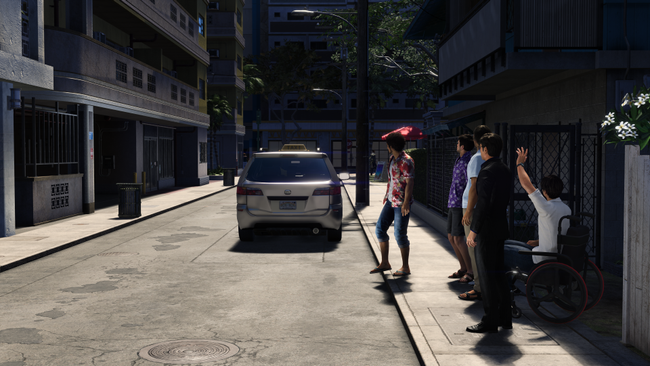
While not actually equivalent to real-life traveling, the Like a Dragon series has been one of the predominant ways for me to experience city life for the decade I’ve been a fan. Visiting these intricately replicated virtual cities soon feels like home, even for those not familiar, and it’s easy to understand why they’re such comfortable plays for so many people. In the case of Infinite Wealth, having half of the game take place in Honolulu is a somewhat interesting risk, one that might not be immediately apparent to all Western fans. There’s been a developing stigma for years about the ethics of Hawaiian tourism, although I don’t think I necessarily have the chops to make a declarative statement on that here. I certainly hope the narrative treats Hawaii and its inhabitants with respect, and from the small bits of story I played, I didn’t see anything that stood out as alarming or strange.
A lot of effort has gone into recreating Hawaii as faithfully as possible, despite issues that arose from starting development during the honest of the COVID-19 pandemic. Sakamoto told us that when development began, the team was unable to travel internationally. Not actually being able to go to Hawaii created problems, since the team is usually able to get direct references of the cities they digitally recreate. To this end, they were able to hire local support, and even got involved with specific American retailers like the ABC Store. (As a Virginia resident who likes to drink alcohol, I had a very different idea in mind for what they meant by this, but apparently, these ABC Stores are Hawaiian convenience stores. You learn something new every day!)
Later on in the night when we had a post-demo Q&A session, I was able to follow-up on this comment about the local support they enlisted.
Via Sakamoto’s translator, he said:
“When it comes to recreating local environments in Japan, we can go take pictures and videos. From those materials we construct it in the game. When it comes to Hawaii, we can’t really do that. So we had to take a different approach when it comes to recreating Hawaii and gathering materials, and so that’s where this individual at this organization named Tetris Inc. came into the picture. This person has worked with Sega before, and we’ve had a working relationship.
This was the person who enabled us to go out and negotiate with some of the local shops and businesses and open up those collaboration opportunities. Gathering some of those assets and materials from Hawaiian environments. When it came time for us to go to Hawaii ourselves, we simply googled Hawaiian coordinators and guides. We were looking for Japanese coordinators so that it would be easier to communicate with them. So yeah, we googled!”

He finished by saying it was a small team involved in making the Hawaiian environment in the game. You could have fooled me, because the attention to detail matches the standards set by past entries. There was so much to see and do Honolulu, and when I was able to start messing with the game's combat system, there are also a lot of new Jobs to experiment with. They’re unlocked by trying new activities around the game world, and can be changed by going to the Alo-Happy Tours building. Jobs are a lot more flexible in this game, even letting you carry over specific skills between them, which may address most of my issues with the previous game's version of this system. I also love that because Ichiban is a tourist in an unknown land, you are encouraged to do things like deep sea diving or watching a fire-breather to give Ichi a “that’s it!” moment. It’s neat and cute for a character with such an overactive imagination.
I think my favorite job I was able to try out was Desperado, which I immediately put on Kiryu because of course I needed to see him as a cowboy with a gun. The joy in a gunslinger Kiryu needs no explanation, and his lasso attack that can silence enemies was icing on the cake.
Ichiban, probably one of my favorite protagonists in recent memory, is just as much of a treat as he ever was. Always looking to help others, whether it be the now dejected and relocated Ikari from 7 or a movie studio in need of a stuntman on the fly. The side stories I was able to take part in lived up to the series’ quirky pedigree in this regard.
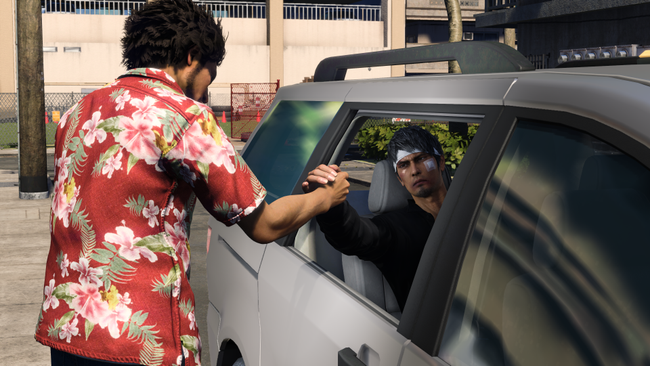
Ichiban also shows just as much attention to his friends, and I’m quite fond of the changes they’ve made here. They’ve created a Bingo sheet for each character, where events and conversations can pop up from visiting specific locations. You’re encouraged to explore to learn more about your friends. In my favorite instance I noticed, new party member Chitose found a fire-breathing street performer. This ended up starting a conversation about how good she was at using the yo-yo, and then increased my bond with her. There seems like there will be a lot to this, and I’m excited to learn the most I can about everyone. What I found truly great about this little exchange is that immediately after this performer then began his fire-breathing animation again which caused minor damage to Ichiban, knocking him down. I’ll admit, I busted out laughing at this. When I got up, I used Ichiban’s new greeting button on him and I then started a friendship with him. Being able to befriend the local residents of Hawaii sounds like it’ll be a lot of fun .. his name was ironically enough Ifrit.
I was also happy to see that our preview build had the English dub of the game available, and getting to hear Ichiban's English voiceover performed by Kaiji Tang was a treat as expected. I tried to study the mouth flaps, and it seems like they’ve made some effort to lip-sync them, unlike Lost Judgment which seemed more like a straight dub over the facial animation.
As I said before, there’s so much to do in Honolulu, so much that I’m struggling to find something meaningful to say about all of it. If there was one thing I wish I could have tried, it was probably Crazy Delivery. I did get to try out segway travel, which involved a funny side story where the inventor of this batch (dubbed a Street Surfer) is currently trying to let people know they’re no longer dangerous. Since they still are, you agree to help him test it and that allows you to travel around quickly as long as your segway has a battery that will need recharging at spots and cost some money to do so. You can even map paths for it to follow automatically, it’s a very useful device for transportation.
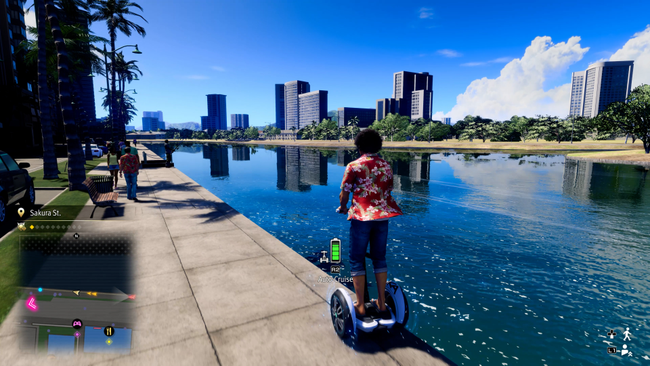
I explored the town as thoroughly as I could, but left enough for my own playthrough later this month. I started near Kolonahe Street and took the long way around the city just letting myself get distracted in anything along the way. I bought a cookie for Kiryu at some point, and perused a series of street vendors in Anaconda Harbor Park. I went swimming with friends too, even hit up the Karaoke to check out Chitose’s exclusive song, Honululu City Lights. Her English actress Suzie Yeung demolished the track, with her performance on an already touching song tugging on my heartstrings. It was also hilarious and sweet to see Ichiban cheer her on during it, just like he would for his friends back home in the previous game. This Karaoke excursion awoke something in me, rekindled my love for this minigame that would definitely affect the trajectory of my next free-roam demo segment.
In regards to combat, RPG players are sure to feel right at home. At the time of this event a few months ago, we were one of the first groups to get our hands on Infinite Wealth’s turn-based gameplay. Since then, anyone who purchased (or got on GamePass) Like a Dragon Gaiden: The Man Who Erased His Name was offered a demo very similar to the first segment I played at this preview event. Not the story, but the general gameplay and how it works. Because I imagine most series' fans have had a chance to check out the public demo, I’ll spare you too many specifics so I can avoid being redundant. Importantly, though. being able to reposition your characters during their turns feels like the puzzle piece that 7’s battle system was missing all along. It’s such a simple change, but it does open your options up. I found myself often lining my characters up in ways where I could knock enemies into other allies, which initiated a follow-up attack. It felt great too, it’s nice that Infinite Wealth has added just enough tactical influence to seriously improve an already solid battle system into a great one.
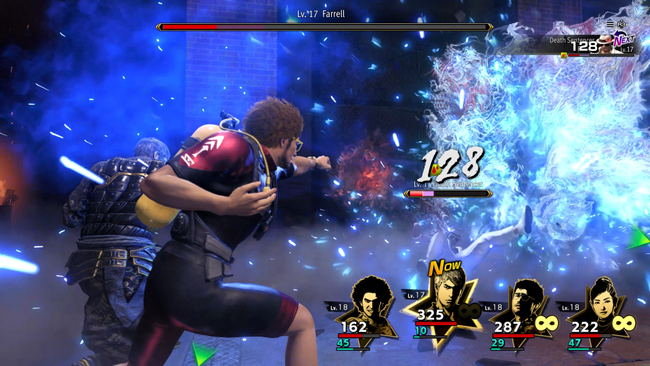
However, I think my favorite combat feature was Smackdown which allows you to instantly end fights from enemies under a specific level, if you wish. This is the kind of feature games like Earthbound touted on SNES, so it’s always strange that more RPGs don’t use it more often. I especially love that it’s entirely optional, so players who want to play out each and every battle are free to do so.
After my incredible experience re-entering the shoes of Ichiban after all these years in such a fresh new setting, we were whisked away to the shores of Dondoko Island for a brief snippet of what we could expect in this community builder mode. We’ve shared the core features of this mode when it was announced, but essentially, this offers a rather expansive mini-game where you revitalize a small little island to turn it into a resort. The goal is to clean it up and build new structures to draw in more tourists.

There were three tools I was able to make in this time: a bat for cleaning up trash, a bug net for… take a guess, and a trident for catching fish. We didn’t have long to mess with this mode, about half an hour, and I was really only able to clear some trash and catch some bugs. You can sell anything you collect for Dondoko bucks, which can be put back into the island. There’s also a time management system you’ll need to keep your eyes on, but the extent of this wasn’t able to be fully grasped from what I played.
I can definitely see why this mode would appeal to people who love town-building simulation games; that type of person is not me. When going over it, Sakamoto stated that this was one of the most expansive pieces of content the team had ever offered. A sort of “game within a game”. Then going further to add that it could probably stand as its own release. This has me interested in how the full version of it will stack up, and sincerely hope that fans of those types of games enjoy it.
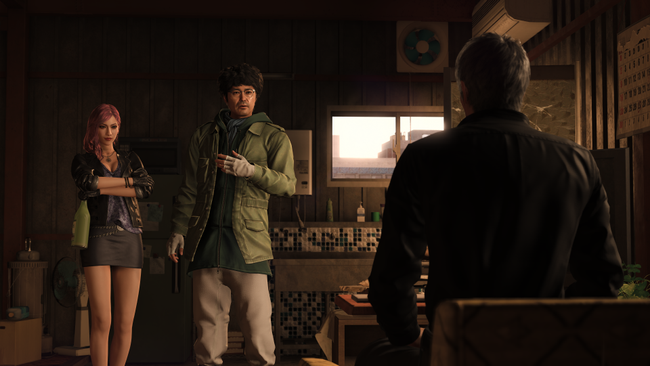
Next up we got to play our last story-based demo, which involved Kiryu creating a bucket list with returning characters Nanba and Seonhee. Both of them, along with Saeko later in the chapter, were the party members joining Kiryu. At this point I had my fill of the combat, and wanted to see how the side content felt in this half of the game that is just revisiting Japan. So, I took a taxi right to Kamurocho and just reveled in nostalgia. It felt fitting for Kiryu, since he has a brand new mechanic dedicated to reminiscing. By going to certain places important to Kiryu from previous games. Kiryu will use this to reflect on these moments, and then afterward, you will get small improvements in one of Kiryu’s three classic fighting styles (Soul, Rush, and Beast). This was sweet, and in one instance hilarious to see Kiryu reminisce of a “dream” he had where he was Sakamoto Ryoma. Cute.
Okay, so maybe I didn’t necessarily revel in nostalgia as much as I hit up the first Karaoke joint I could find and spent most of my time getting the high scores. I’m a sucker for rhythm games, and this is more or less the same one from 7. I have no confirmation on if the song lists were final, and there were a lot of classics like Baka Mitai and Butterfly (which Seonhee’s English voice actress did a great job singing, I might add!). There was also a new one for this game, a Kiryu song called Baka Darou. It’s a sad song that seems perfect for Kiryu at this part of his life. I got pretty emotional, fantastic stuff. Most of my time with Kiryu was spent taking it slow and reminiscing. I didn’t do many battles, as I had gotten a feel for how he played in Ichiban’s demo. I do wonder why the half of the game where Kiryu is the protagonist won’t have his own brawler combat system, but that’s a nitpick that might even be addressed in the game itself.
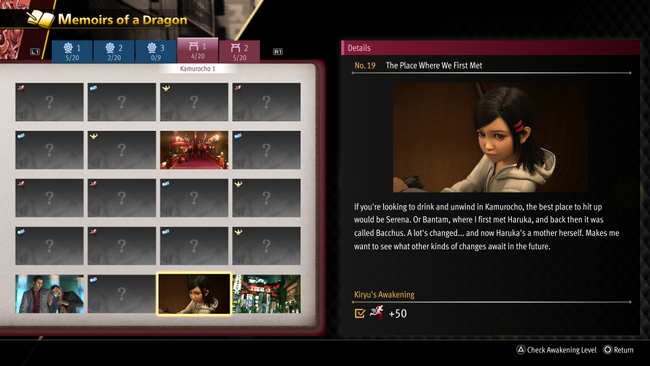
I took a walk through Iijincho and Kamurocho, knocking off items from Kiryu's bucket list. I took time to eat meals with his new allies, and made Kiryu have fun. Guy has been through a lot; he deserves it. While I’m sure the game will ramp up into life-threatening stakes and teeth-clenching suspense; I took this seemingly quiet moment in Kiryu’s story to take it easy. I didn’t make as much progress as I’m sure others did in the room, but I had a wonderful time down memory lane.
Finally, we got to challenge a giant shark boss on a boat. This was pretty fun, as it allowed us to look at later-game jobs and experiment more with elemental weaknesses. I’ll save the intricacies as a surprise for you, but just know that it was a fun way to cap off our experience.
I think it was great that each one of us at the preview event was given the freedom to experience the game as we wanted to. Some bee-lined through the story, and I decided to take it slower. I look forward to experimenting with all the new jobs, getting what will probably be the most ethically sound Hawaiian tourism experience, and getting to know Ichi’s new friends.
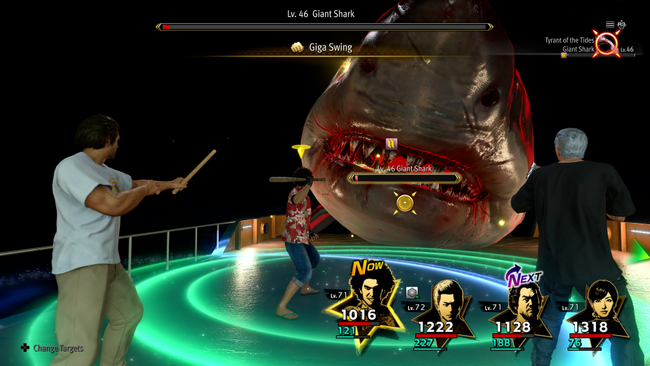
Like a Dragon: Infinite Wealth is shaping up to be an exciting new entry in this long-running series. It takes its new leading man and has him go off to exciting new places I’d never imagine this series would ever go to. For its classic hero, it seems to be that they’re setting up a more somber and retrospective experience. Kiryu’s chapter felt tender in how they addressed his legacy, and I’m excited to see how they’ll tackle certain subplots.
Sakamoto also mentioned during the introduction that Kiryu’s part of the story tried to tackle the core theme of “What does it mean to be happy?” and that resonated with me. What does that truly mean? Was it visiting new places or being at home with those you love? What if that isn’t an option? What are you left to do but wander the city streets all alone, homesick, and missing your family? If Kiryu is taking any advice, I say that another big bowl of ramen certainly did me a lot of good on that cold, late night walk back to my hotel room.